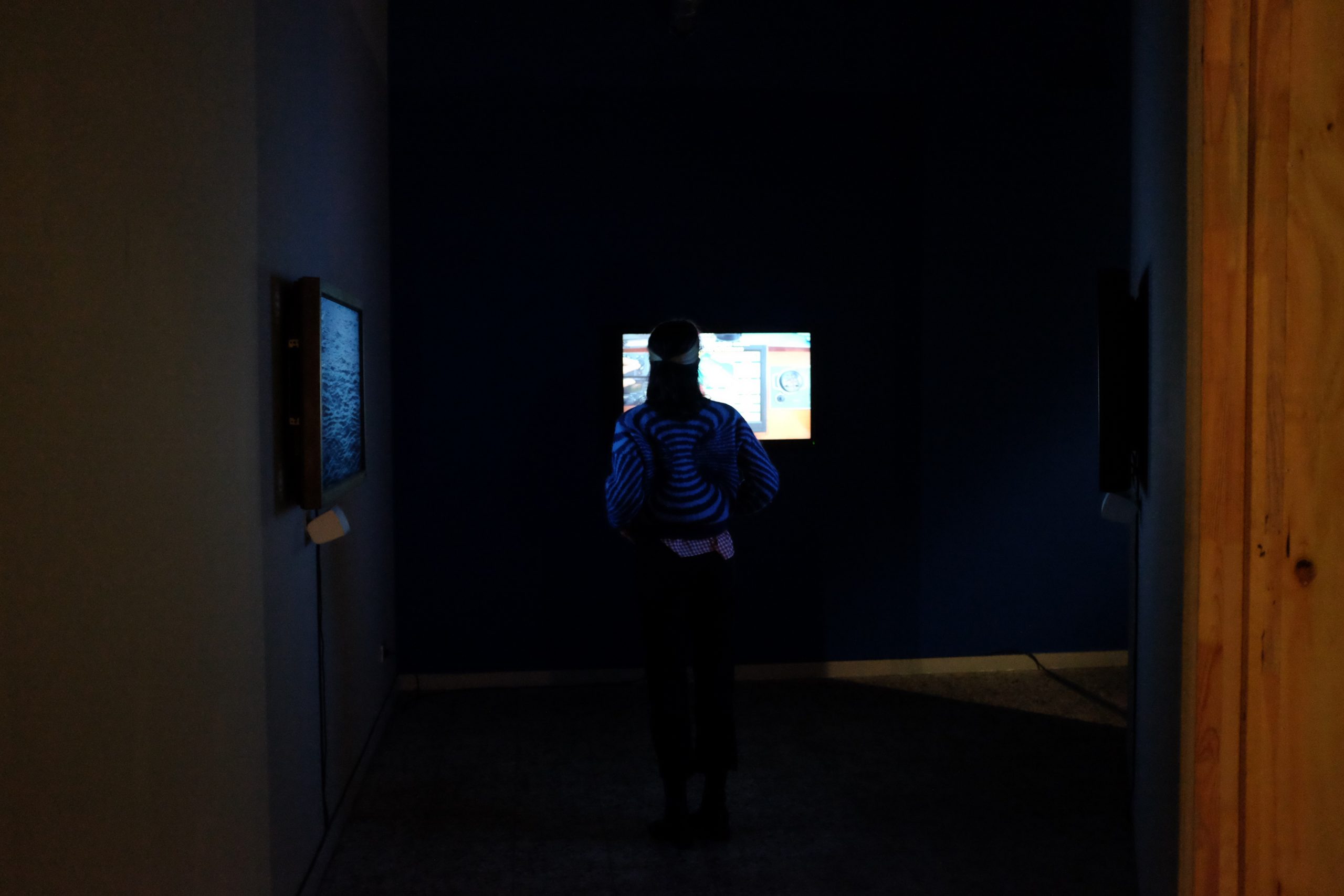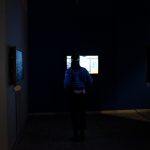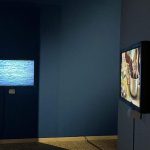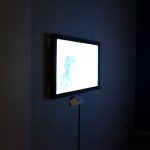The Sunken Lighthouse
LOUISE CARVER, ABBÉY ODUNLAMI & JAMIE ALLEN
The artwork These Flows Shall Not Be Contained conveys the continuous relationships between human beings, territories, seas, oceans, and maritime regions, forged through cultural practices of migration, governance, and food. It does so through a three-channel video installation, in which three perspectives examine these issues. Together they form a syncopated conversation between the largest sub-Saharan migrant population in Italy (Nigerian Migrants from Edo State), the practices and politics of seafood and fishing, and the ways that national and supra-national policy abstracts, attempts to govern and delimit borders, trade, movement, and commerce.
Stream 1 – Borders, Policy, Governance (Marine areas, migration/oceans policy, etc.)
This segment provides a higher scale perspective of the historical and contemporary governance dynamics of the Mediterranean seas, examining how conjoined processes of border securitization and marine conservation/spatial planning unfold through narratives of humanitarianism – “of saving lives” and environmental protection, while at the same time these technologies are marketized and secure marine spaces. This segment examines militarised forms of surveillance and technology-informed remote sensing for tracking human bodies and marine life. Both are becoming increasingly central not only to enforce the boundaries of Europe but the European enterprise of conservation in the context of legacies of colonialism and contemporary marine resource extraction from Africa and elsewhere.
Stream 2 – Migration, trajectories, travel (Nigeria → Italy) This segment focuses on highlighting the voices and experiences of the Edo | Benin people of Nigeria.
In the popular imagination, Nigeria is known for its natural resources such as copper, tin, crude oil, etc., its film industry, its population (200 million+), and its music industry (most notably Fela Kuti). All these identity tokens largely are controlled by and come from two regions: Southwest [Yoruba land] & Southeast [Igbo land]. Along with the Hausa-dominated Northern Nigeria, these regions control the narratives that construct Nigeria’s global image. In a country with nearly 500 different spoken languages and dialects within its borders, dominated by only three, it can be challenging to get a word in.
The Benin People of Edo State and the former Benin Empire in Southern Nigeria have not been without their contribution to Nigeria’s history. Today, the Edo people are one of the largest migrant populations within the Nigerian migrant population of Italy. This segment brings to the foreground Edo cuisine and cooking practices through a communal dinner held in Amantea, in the Calabria region of Italy.
Stream 3 – Food, soup, eating (Stone soup story, migration centre food, etc.)
This segment focuses on the traditions of cooking and food procurement that subtend larger metabolic processes, movement, and ways of life between the lands and waters bordering the Mediterranean region.
The image of the Mediterranean sea as itself a kind of “soup” – a salty broth, from which both European, African, and Middle-Eastern nations draw foods, resources, and connectivity frames stories and imagery, textures, and narration. The allegory of the Mediterranean-as-soup helps and stories like the fabled European “Stone Soup ” frames the interrelation of fisheries, migration, and quotidian practices of cooking. Ecologies and populations change the availability, resources, and relation to foodstuffs emerging from the Mediterranean. Related to it is the question how local cultures adapt, cross-pollinate and integrate culinary practices and traditions, ingredients, and compocustoms.






